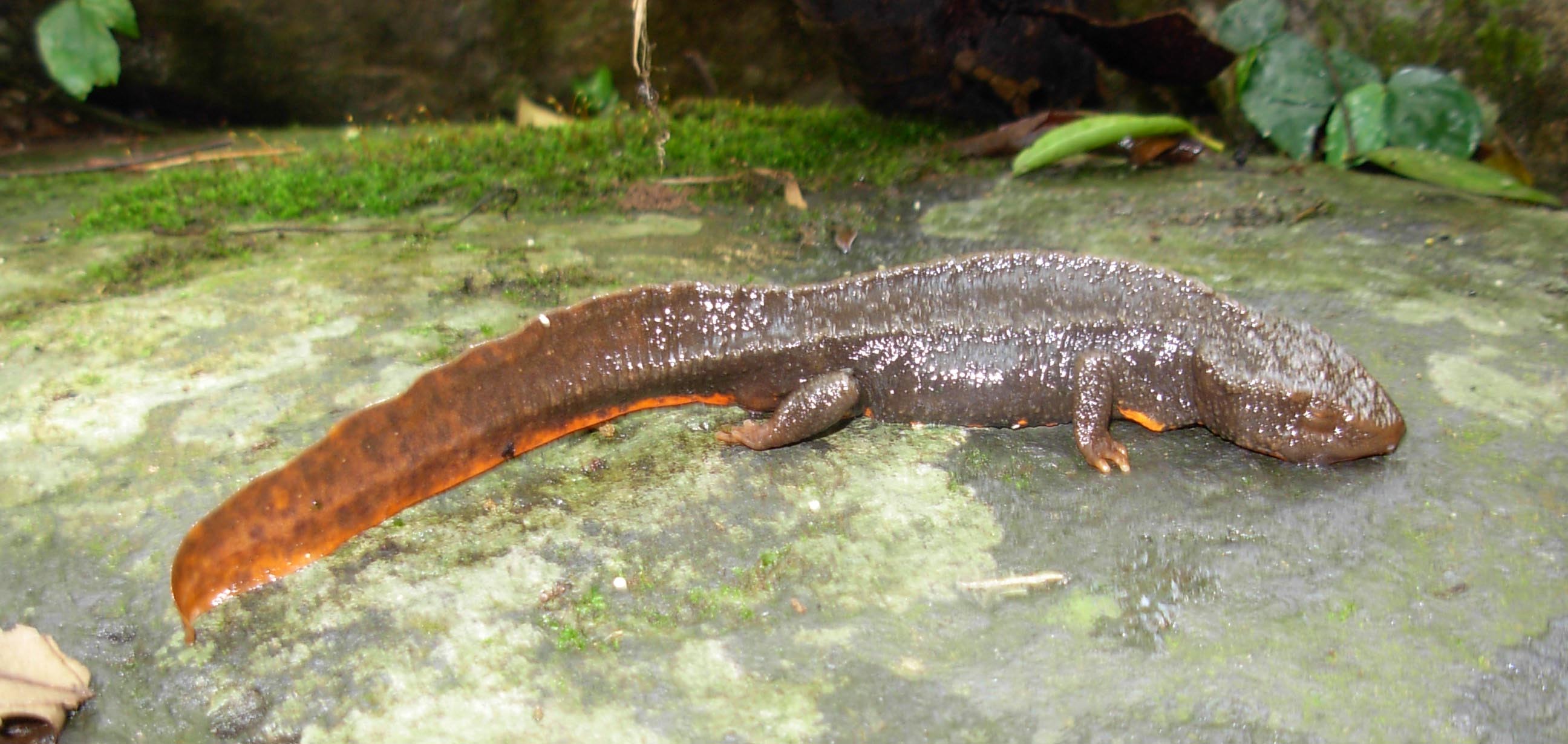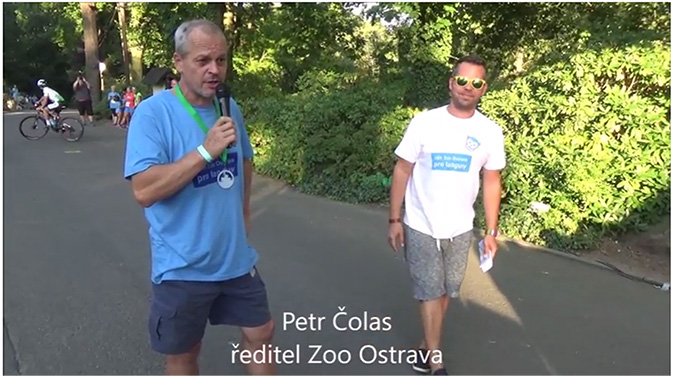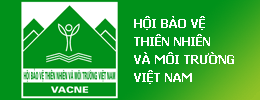Tam Dao National Park - Giới thiệu Vườn quốc gia Tam Đảo
When you travel with CeREC through natural habitat adventures, you not only enjoy spectacular nature and wildlife but also join us as a force for change in addressing the most pressing conservation challenges in Vietnam. Your trip helps us to protect nature and wildlife.
Please contact us if you plan to have a nature tour in Vietnam.
Tam Dao National Park is a protected area in North Vietnam. It was established in 1996, succeeding from the Conservation Forest Tam Dao which was formed in 1977. The park is about 85 km northwest of Hanoi. Its location is at 21°21’ to 21°42’ N and 105°23’ to 105°44’ E. It spans a large area along the Tam Dao range and administratively belongs to 6 districts and 1 city of 3 provinces (Vinh Phuc Province; Tuyen Quang Province and Thai Nguyen Province). Total area of the Park is 368.83 km2. Tam Dao National Park is based in the Tam Dao range, which is one of the terminal spurs of a larger mountainous area in the Northwest region of Vietnam. It runs 80 km from north west to south east, and has more than 20 peaks with altitudes of over 1000m. The highest summit is Tam Dao North with an altitude of 1592 m. Three other peaks with beautiful scenery are Thien Thi at 1375 m, Thach Ban at 1388 m and Phu Nghia at 1300 m. Sharp peaks with sloping sides and numerous, deep partitions are characteristic of the topology.

Pic 1. Three highest peaks in Tam Dao NP
The boundary of the national park is located at an altitude of 100 m around the Tam Dao range. There is a larger buffer zone (which has area of approximately 535 km2) which surrounds the national park which has an altitude below 100 m. Seventy per cent of the area of the park is covered by natural and artificial forest. The natural forest is about 220 km2 and the human altered forest is about 30 km2.
Due to the tall mountainous range that splits the area into two parts, the national park's climatic condition is divided into two areas with different rainfalls. This difference and some other factors such as the effect of human activity divide the park into some smaller climatic zones which increase the bio-diversity in the park. Tam Dao park has eight kinds of forest types distributed in different topographic and climatic areas :
• The tropical moist evergreen forest covers most of Tam Đảo Range below the altitude of 800 m. Some rare and precious species include Shorea chinensis, Michelia,Cinnamomum sp. and Pavviesia annamensis.
• The subtropical moist evergreen low mountain forest covers the areas over 800 m and includes the species of the families: Lauraceae, Fagaceae, Theaceae, Magroliaceae, and Hamamelidaceae. In places with altitudes of over 1000 m there are some species of conifer such as Dacrycarpus imbrricatus, Fokieria hodginsii, Podocarpus neriifolicy, and Nageia fleuryi. Below the canopy there are species of coffee family (Rubiaceae), Myrsinaceae family or Euphorbiaceae family.
• The high mountain short forest is a dwarf variety of two aforementioned forest types including species of these families: Ercaceae, Lauraceae, Fagaceae, Illiciaceae, andAceraceae.
• The bamboo forest only covers 8.84 km2 and sparsely appears at altitudes of 500 m to 800 m.
• The restored forest was created after the establishment the national park. Before that, this area was exploited to harvest wood by forest management and was cultivated by farmers. Now this area has been replanted with species such as Symplocos, Litsea cubeba, and a species of Xylopia.
• The plantation forest was established in the French colonial period with Pinus massoniana (Horsetail Pine).
• The bush appears in some dry and sun exposed areas including Aporosa dioica, Bridelia tomentosa, species of Helicteres, and Phyllanthus embrica.
• The grass land appears in areas of exploited forest, and includes Saccharum spontaneum, Thysamolema maxima, Chromolaena odorata (over 2 m) Imperata cylindrica,Paspalum scrobiculatum, and Setaria viridis (under 2 m) .

Pic.2. Primary limestone forest in Tao Dao NP
Out of over 2000 plant species, 904 species are considered useful to humans. There are 42 species endemic to Tam Dao National Park and also 64 other species considered rare including Dendrobium daoensis, Camellia longicaudata, Camellia petelotii,Asarum petelotii, Mosla tamdaoensis, and Paris delavayi.
The national park has diverse animal species, with 840 species in total (listed below).:
Mammals: 91 species from 8 orders, 27 families
Birds: 239 species from 16 orders, 50 families
Reptile: 75 species from 3 orders, 14 famlies
Amphibians: 28 species from 3 orders, 7 families
Eleven of these species are endemic to Tam Dao National Park including the snake species Amphiesma angeli and Boiga multitempolaris, the amphibian Paramesotriton deloustali and eight species of insects; 22 species are endemic to North Vietnam including nine bird species, four reptiles, three amphibians and six species of insect; six are endemic to Vietnam (five bird species and one species of amphibian).
Pic 3. Endemic Tam Dao Salamander Paramesotriton deloustali
There are two sites for tourists in the park. The first is Tam Dao town which was established by French colonists in 1907 as a tranquil hill resort in northern Vietnam. Tam Dao Town is nestled in a valley covering only 3 km2. There now remain a stone church, some villas and palaces built by French colonists. It has Thac Bac (The Silver Fall), Rung Rinh peak and Tam Đảo 2, a remnant of another resort built many years ago.
The second tourist location is Tay Thien site. It includes Tay Thien Quoc Mau Temple (literally The "Temple of East Heaven National Mother") and many pagodas. Along with Thien Vien Truc Lam (literally: "Dhyana Palace in Bamboo Forest") in Da Lat and Yen Tu, Thien Vien Truc Lam Tay Thien is a center of Vietnamese Buddhism.
Near
Pic 4. Main gates of Den Thuong Pagoda in Tay Thien
Near the Headquarter of Tam Dao National Park there is a Bear Rescue Centre managed by AnimalAsia. The Centre keeps the Malayasian bears and Sun bears which conficated from illegal bear farms and could not be released back into the wild due severe injury and infection. In the Centre, the bears are provided with the best contditions to continue their life in captivity. Visitors can come to the Centre to observe interesting behaviour of the bears and to learn about bear conservation

Pic 5. Overall scene of bear keeping enclusure in Tam Dao Bear Rescue Centre
Source: Adapted from from Wikipedia, the free encyclopedia/Tam Đảo National Park (May 2014)
II. RELATED DOCUMENTS - TÀI LIỆU LIÊN QUAN
Davidson P. và cs. 2005. Đánh giá giá trị bảo tồn các loài chim ở Vườn quốc gia Tam Đảo. Báo cáo kết quả điều tra cho Dự án GTZ/TDM. Download Pdf.
Nguyễn Quảng Trường và cs. 2004. Báo cáo Khảo sát và tập huấn giám sát các loài bò sát và ếch nhái quan trọng ở Vườn quốc gia Tam Đảo. Báo cáo cho Dự án GTZ/TDM. Download Pdf.
Nguyen Xuan Dang et al. (2004). Control of wild animals in captivity and orchids gardens in Tam Dao National Park area.Download Pdf
Nguyễn Xuân Đặng và cs.(2004). Báo cáo kết quả điều tra nuôi nhốt động vật hoang dã và nuôi trồng lan tại khu vực Vườn quốc gia Tam Đảo. Download Pdf
Nguyễn Xuân Đặng và cs. (2005). Báo cáo tổng kết đánh giá nhanh khu hệ thú ở Vườn quốc gia Tam Đảo. Download Pdf
Nguyen Xuan Dang et al. (2005). Final Report of Rapid assessment of mammals in the Tam Dao National Park. Download Pdf.
Nguyễn Xuân Đặng và cs.(2006). Kết quả điều tra khu hệ thú Vườn quốc gia Tam Đảo. Tạp chí Sinh họ. Download Pdf
Nguyen Xuan Dang et al. (2006). Results of status assessment of Francois langur and other primates in Tam Dao National Park. Download Pdf
Nguyễn Xuân Đặng và cs. (2006). Báo cáo đánh giá tình trạng Voọc đen má trắng và các loài linh trưởng khác tại Vườn quốc gia Tam Đảo. Download Pdf
Nguyễn Xuân Đặng và cs. (2009). Báo cáo kết quả xây dựng chương trình giám sát và đánh giá đa dạng sinh học cho Vườn quốc gia Tam Đảo. Download Pdf
Nguyễn Xuân Đặng và cs. (2011). Thú hoang dã ở Vườn quốc gia Tam Đảo: Hiện trạng khu hệ và sinh học, sinh thái các loài cơ bản. Download Pdf
Trần Ninh, Hakoda Naotoshi 2009. Các loài tra của Vườn quốc gia Tam Đảo. Báo cáo cho Dự án GTZ/TDM. Download Pdf.
Trần Văn Cự, 2007. Báo cáo kết quả điều tra cá cóc tại một số địa điểm ở Vườn quốc gia Tam Đảo. Báo cáo cho Dự án GTZ/TDM. Download Pdf.
Search
Main menu
- CeREC News - Bản tin CeREC
- Conservation Programs - Các chương trình bảo tồn
- Biodiversity Projects - Các dự án Đa dạng sinh học
- Environmental Projects - Các dự án Môi trường
- Training & Education - Đào tạo và Tập huấn
- Flagship Species - Loài trọng tâm của CeREC
- New Species- Loài mới phát hiện
- Law Enforcement - Thực thi pháp luật
- Publications - Các tài liệu xuất bản
- Technical Reports - Các báo cáo kỹ thuật
- Training Documents - Tài liệu đào tạo và Tập huấn
- Photo Reports - Phóng sự ảnh
- Nature Tours - Tham quan dã ngoại
- Partners & Donors - Đối tác và Nhà tài trợ
Recent Posts
Partners & Donors
CeREC thanks the following organizations for their generous support and sponsorship:







.jpg)


.jpg)

.jpg)


.jpg)
.jpg)
.jpg)




